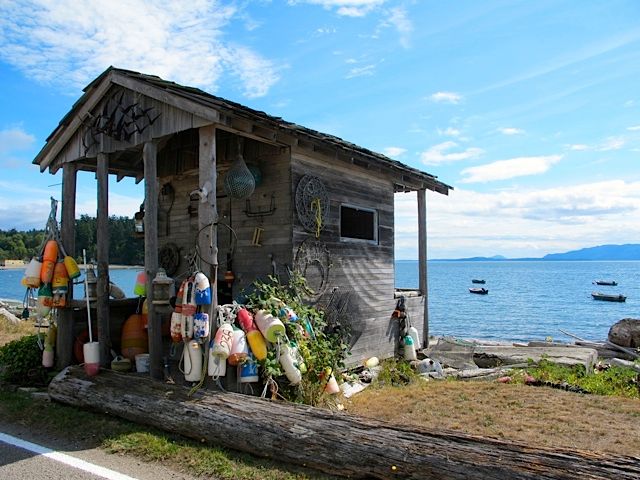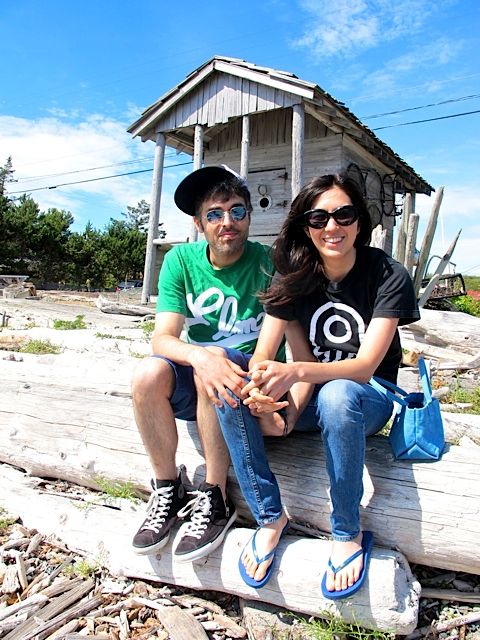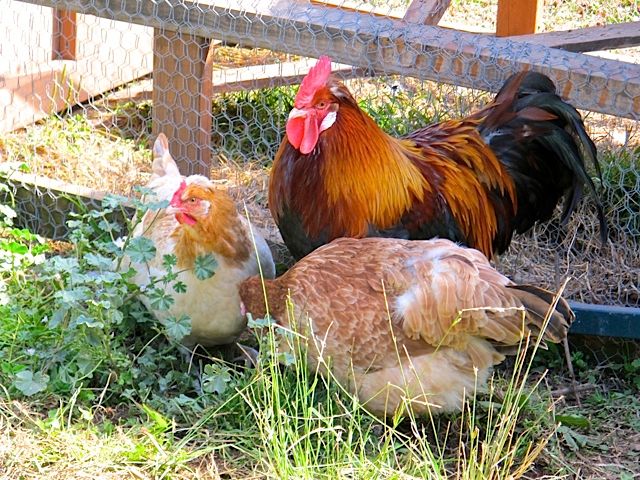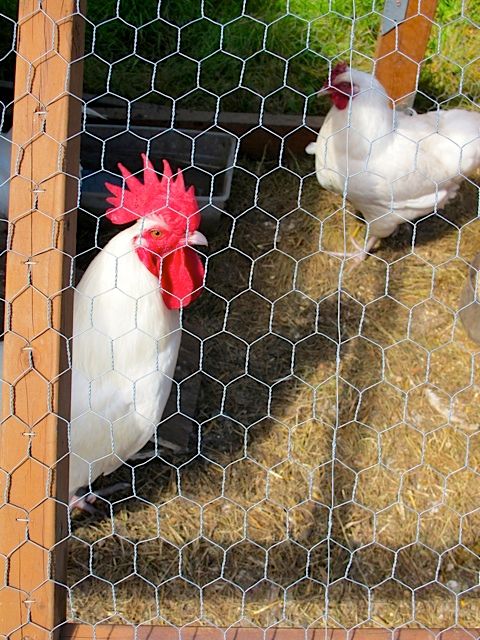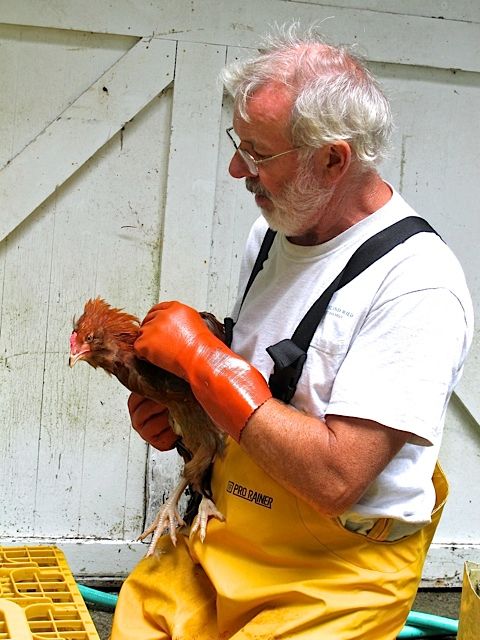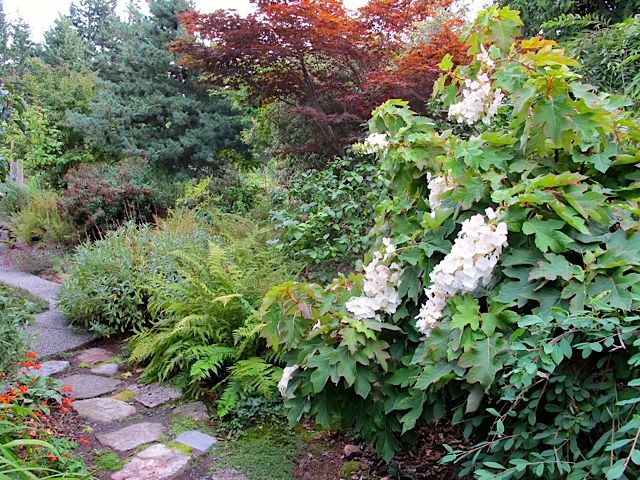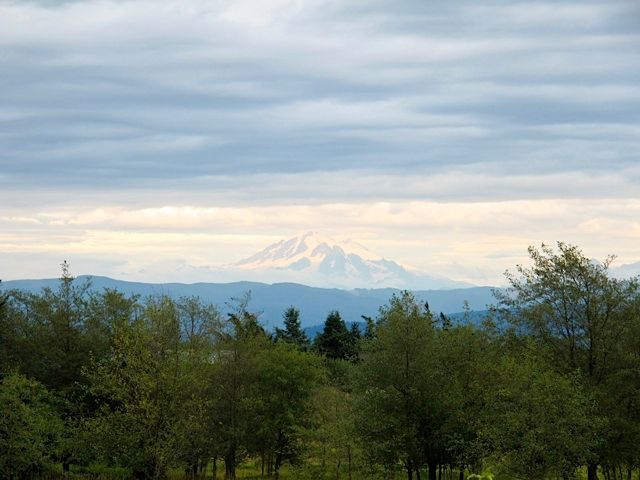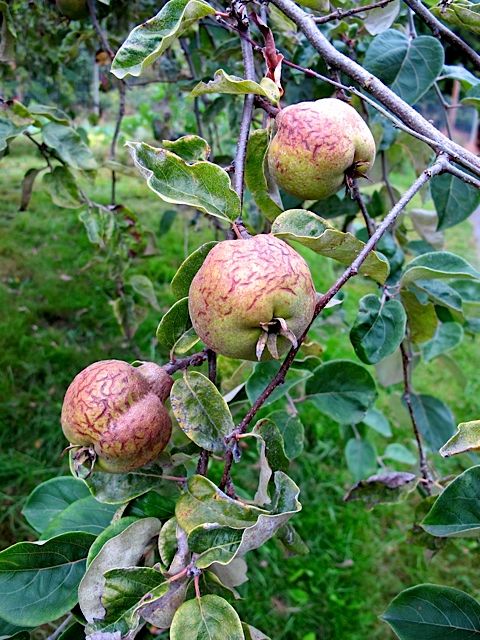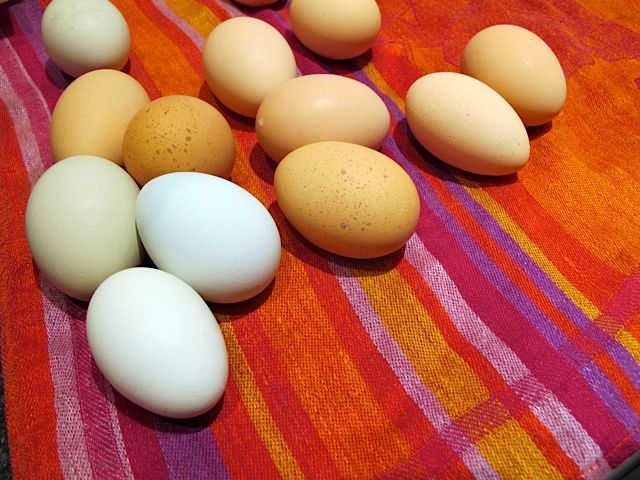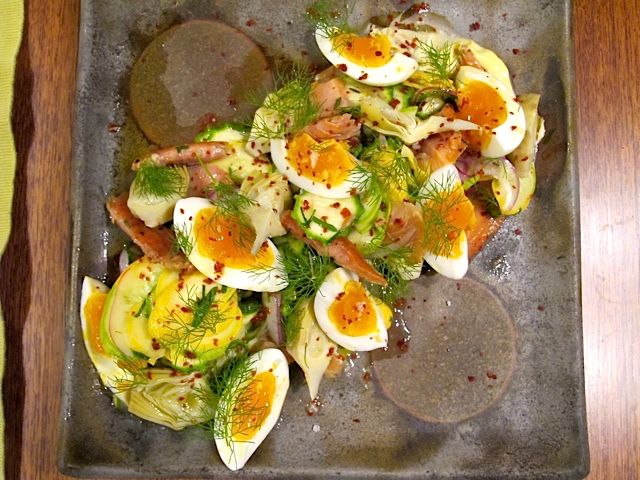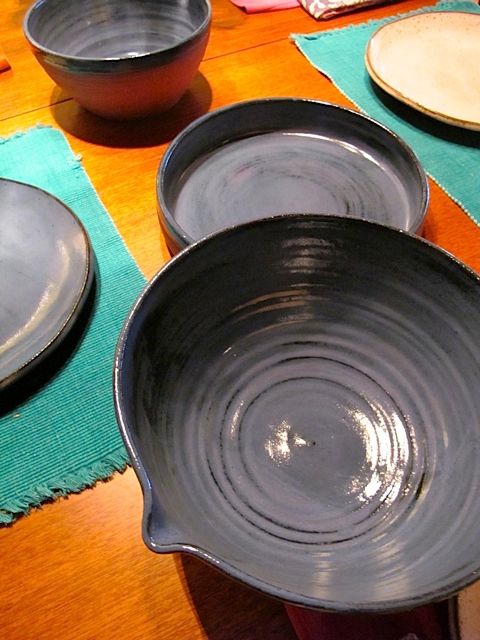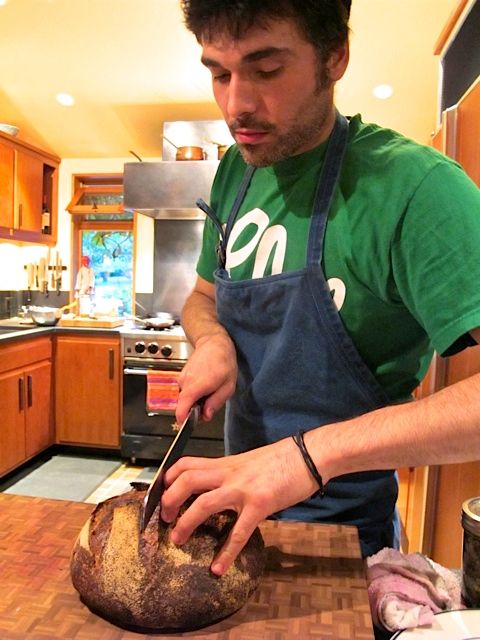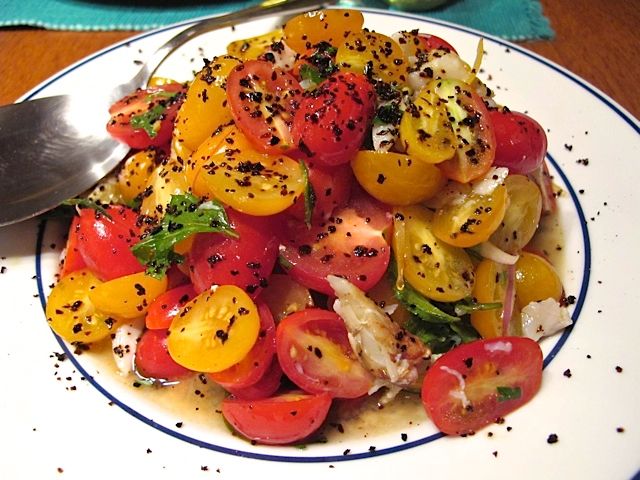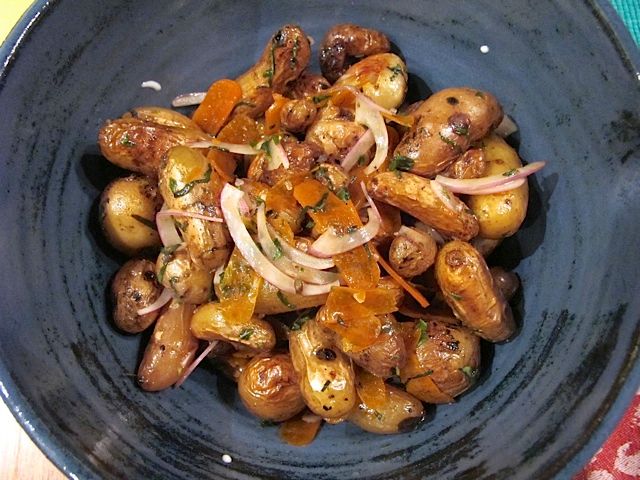April 2013, I was having the month of my life. I ended up coming up with my own personal theme for the year, “tiger by the tail,” because my life was on such a breakneck but wildly fun pace, full of travel. Sometimes you need to let yourself go, not answer all your emails, be a little less available, put an away message on your phone, stay out late, get outta Dodge. I had just returned from 10 over-the-top-with-beauty days in New Zealand, and then after a week of catch-up on work and laundry, I rocketed to Coachella for a long weekend of shenanigans with my sister. And just as we were repacking our bags (again) for a weeklong trip to Jazz Fest in New Orleans (sorry, liver, so sorry!), I was invited to a Saturday night dinner at the storybook-pretty Scribe Winery. I had no time that weekend to spare. Of course I was going to hop in the car.
It was like taking a long, deep, slow, yoga-like exhale, eating passed bites prepared by Thomas McNaughton in the pink Sonoma sunset and brisk (and smoky) night air. As we sat down for a dinner that was the essence of California, the prescient Andrew Mariani (one of the dashing Scribe brothers) made sure to sit me next to Kylen McCarthy, and my date across the long communal table was seated next to the delightful Eva Soroken; they were a couple visiting from Seattle. It was a fortuitous meeting (and place to meet). A night of deep conversation about food and music and travel, while bountiful family-style plates filled the table, beautiful wines poured heartily in our glasses. We connected.
A few months later, literally the day after I decided I wasn’t going to Burning Man that year (a decision I was laboring over, I love the desert so damn much), I found an email in my inbox from Eva, asking if I’d like to come up to Seattle and go to Lummi Island with her and Kylen, and learn more about what they do and meet the people in their world. They recommended late August. Kismet. I had just made the mental space for it, and look how this special invite sailed in. Universe, you are funny that way.
The talented duo founded Pioneer Square Pantry, an artisanally minded partnership based in Seattle and Tokyo that is like a virtual shop, crafty collective, and traveling culinary road show. They have many connections to Japan (Eva has strong ties to the eyewear/optical world, specifically Cutler and Gross, and to Steven Alan Tokyo), and they host many specially curated dinners and events for clients in Japan.
Kylen and Eva put so much care into their events, schlepping cases of Scribe Wine (to Japan!), Pioneer Square Pantry’s (PSQP’s) homemade pickles and mustard, their exclusive pottery, and even the granola they make has so many elements of the West Coast life in it, from the Mariani almonds to the San Juan salt (well, with a little bit of Massachusetts maple syrup too). It ends up becoming a fun cultural exchange as well—granola isn’t part of the Japanese diet, but PSQP created a special release for their coffee partners in Tokyo, the esteemed Bear Pond Espresso, who sell it at their shop. Kylen and Eva don’t see themselves as a food company, or a catering company—but they like to use food as a vehicle to talk about their vision, and their global collective of like-minded food-making cohorts.
They also get to experience time and again how easily food breaks down barriers—Kylen’s confit potatoes with shaved mullet roe and celery leaves was a particular hit with the Japanese guests at one event. He also likes to feature beef at their events in Japan—it seems butchers don’t quite have the cult status they do here. Anywhere they go, they like to share meals and exchange food.
I enjoyed the introduction to their community in Seattle, which included their pals at Rain Shadow Meats, their friend Ayako of Ayako & Family’s amazing jams (such pure fruit!), and the Sitka & Spruce family (Kylen worked at Sitka, The Corson Building and its commissary, and opened Bar Sajor). Fortunately Kylen and Eva love coffee as much as I do—we also stopped a few times at a couple of Stumptown Coffee locations while we were in Seattle, and their trusty Chemex gear was always close at hand.
When I told people I was going to Lummi Island, of course everyone asked, “Are you going to The Willows Inn?” The answer was no, and I should get a T-shirt saying as much: “I Went to Lummi Island and Didn’t Go to The Willows Inn”, but I did get to meet the original owner of Willows, Riley Starks, and harvest chickens with him. Yeah, that’s one way to meet someone.
Starks is the owner of Nettles Farm, which is what eventually inspired and led to the opening of the Willows—the farm supplied ingredients for the restaurant. Starks sold Willows in 2012, and is fully focused on raising chickens at Nettles Farm (his obsession). It’s like a Northwest agriturismo—while I didn’t stay there, there are a couple options for accommodations on the farm, and while you’re there, you can have Riley teach you how to butcher a chicken. Or not! (But you should.)
Riley is on a quest to breed the best-tasting chicken, and believes we are desperately overdue for a conversation about the kinds of chicken we eat, which in the U.S. is primarily the Cornish cross. We talk about Berkshire pigs and Wagyu beef, and we know the origins of our coffee and wine, but we don’t really talk about chickens. With something like 8 billion chickens consumed each year in the U.S., and around 40 billion pounds, it’s surprising how little we talk about chicken.
Riley’s love of flavorful chicken was cemented in France, where he was raised. On his farm, you’ll find the famous poulet de Bresse/blue-foot chicken, and the rare Sulmtalers, which were developed by the Hapsburgs and take up to 10 months to raise to maturity, which is pretty cost-prohibitive (the blue foots take 17 weeks). Of the blue foots, Riley comedically noted, “They carry themselves like a French bird, you can just tell where they’re from.” Le bwok.
So, the reason we were at Nettles was to get some chicken, and I don’t mean just pick them up. Kylen and Eva had arranged for us to actually get them fresh, as in harvesting them. Well, Kylen learned how to kill a chicken (Eva and I just watched). If you are squeamish or a vegan, just skip the next couple of paragraphs and move along to the one that begins “After the chicken harvesting.”
I have never witnessed the death of an animal, although I have grown up with plenty of baby goats in our family oven and pig intestines in the sink, and figured I was way overdue in learning about the process. Riley showed Kylen how to hold the bird, and keep it calm and relaxed, and plunge the little knife in the bird’s little neck in a precise little spot, and quickly bring the chicken over to the metal cones where it would hang upside down to bleed, and have its feet bound tightly—quickly now—before going through the death rattle, which I will say was pretty intense. Flapping and feathers and some clanging. I am not a particularly squeamish person, but there were a few moments that made me wince a bit. The death rattle was one of them.
Riley had an outdoor setup that was rather ideal—our chicken sensei showed us how long to boil the poussins (young chickens), and how to pluck them, and then how to hang them on a metal contraption so they could be easily eviscerated. He showed us how to peel the outer layer off their reptilian feet—it was like pulling a papery layer off a snake. Eva and I were put in charge of cleaning the gizzards—they were really firm and still warm in our hands, and it was amazing to look at the contents within: tiny pebbles, leaves of grass, everything so natural. The bright yellow lining inside was shocking in its brightness.
After the chicken harvesting, Riley showed us around Nettles Farm, which is in such an idyllic space, complete with some mighty cute goats and an expansive garden, all surrounded by trees. We were then off to Full Bloom Farm, where I ditched my bag and got to meet our hosts, Lis and Mark Marshall. Their main house was the picture of beauty, very Japanese-Craftsman. I couldn’t believe the landscaping, so artful. Adjoining the house is a cottage you can rent (which is very well appointed and the way to go). I stayed in the second-floor apartment, which was rather bare bones, but it’s not like I was doing more than just sleeping there. The magic was outside.
Full Bloom is known for growing peonies (without pesticides), but they also grow many vegetables, herbs, and more in their bountiful gardens—you’ll see people stop by to peruse what’s available in their farm stand’s refrigerator. And here’s the big bonus: they raise chickens, so you can enjoy some of the best eggs of your life. The Marshalls have such green thumbs; the place is incredibly lush, and everywhere you saunter there are flowers and fruit trees and a trained wisteria flanking the house that was a work of horticultural high art. In the distance, Mount Baker provides one hell of a backdrop. You won’t want to leave.
That evening, Kylen prepared a late-summer dinner, which was as gorgeous to look at as it was to eat. Actually, eating it was tops, who am I kidding? It was a family-style feast with some of the Marshalls’ friends, and we all oohed and aahed over Kylen’s food presented on the stunning pottery, like the blue pieces by Akiko Graham that are exclusive to PSQP (the blue glaze on red clay is theirs, and they collaboratively developed a line of platters, bowls, cazuelas, chargers, and plates, about 15 pieces in all).
Then there are the Bizen platters that PSQP sources from the third generation of the Harada family in the Okayama prefecture in Japan. The Haradas only fire two times a year, for about two weeks at a time—the clay comes from that area, and it’s one of the most respected kinds of pottery in Japan. It’s rustic, with a rough texture, and incredible colors and sheen. Does beautiful pottery make food taste better. Yes, yes it does.
Kylen’s food was some of the most exciting I had all year—he’s so adept at layering flavors and combining ingredients and textures in a unique way, like his salad with shaved summer squash and zucchini, confited artichoke hearts, quadrants of soft-boiled eggs with deep yellow yolks (farm fresh, of course), cured and smoked salmon that was packed in olive oil and hot Thai chile, smoked olive oil, aioli, and Aleppo. It was so balanced in all its elements: tangy and spicy and creamy and acidic.
Then there was the salad of sliced cherry tomatoes from a farmer friend tossed with juicy pieces of Dungeness crab, pumpkin seed and basil pesto, salted lemon, and topped with Urfa chile (Kylen calls it “the chocolate of chile peppers”). What a flavor bomb. This salad was bonkers. Even writing about it now makes my mouth water.
Nestled into a cazuela was a stewed lamb neck navarin with peperonata, roasted eggplant, and preserved lemon purée, finished with caramelized harissa butter, and a mint and preserved orange salad (the mint had this wonderful mentholated strength that sliced through the deep and rich flavors). I was so happy we got to have the roasted fingerling potatoes (“little missles for flavor” from Full Bloom) topped with shaved bottarga from Tokyo, and we enjoyed escarole and radicchio from Full Bloom too. Bottles of Scribe sylvaner and pinot noir joined us and kept good company. (For a peek at the full meal, check out my pictures here.) Everything was so colorful, balanced, and a tour de force of flavor and freshness, with whispers of an exotic spice cabinet. Beautiful food, but not precious. Earthy. Thought out and assembled carefully, but no tweezers. Real.
Kylen and Eva travel with quite the larder. They pickle a number of things, from tiny ash morels they foraged to banana peppers to giardiniera. The naturally fermented rustic sourdough bread was made by hand (a 16-hour process). All the sauces and aiolis and mustards, by hand. The pig’s head rillettes, by hand. The beautiful pottery, by hand. You look at the hours of manpower that went into each dish (and plate, and platter), and it just makes me so… grateful. It inspires you to want to do better, to make more things. God bless the makers.
To be continued…
For the full set of images on Flickr, click here.
